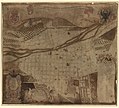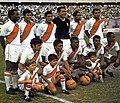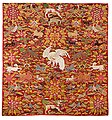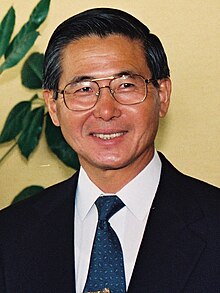Introduction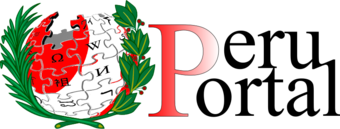
Peru, officially the Republic of Peru, is a country in western South America. It is bordered in the north by Ecuador and Colombia, in the east by Brazil, in the southeast by Bolivia, in the south by Chile, and in the south and west by the Pacific Ocean. Peru is a megadiverse country with habitats ranging from the arid plains of the Pacific coastal region in the west to the peaks of the Andes mountains extending from the north to the southeast of the country to the tropical Amazon basin rainforest in the east with the Amazon River. Peru has a population of over 32 million, and its capital and largest city is Lima. At 1,285,216 km2 (496,225 sq mi), Peru is the 19th largest country in the world, and the third largest in South America. Peruvian territory was home to several cultures during the ancient and medieval periods, and has one of the longest histories of civilization of any country, tracing its heritage back to the 10th millennium BCE. Notable pre-colonial cultures and civilizations include the Caral–Supe civilization (the earliest civilization in the Americas and considered one of the cradles of civilization), the Nazca culture, the Wari and Tiwanaku empires, the Kingdom of Cusco, and the Inca Empire, the largest known state in the pre-Columbian Americas. The Spanish Empire conquered the region in the 16th century and Charles V established a viceroyalty with the official name of the Kingdom of Peru that encompassed most of its South American territories, with its capital in Lima. Higher education started in the Americas with the official establishment of the National University of San Marcos in Lima in 1551. Peru's population includes Mestizos, Amerindians, Europeans, Africans and Asians. The main spoken language is Spanish, although a significant number of Peruvians speak Quechuan languages, Aymara, or other Indigenous languages. This mixture of cultural traditions has resulted in a wide diversity of expressions in fields such as art, cuisine, literature, and music. (Full article...) Entries here consist of Good and Featured articles, which meet a core set of high editorial standards.
The Battle of Ollantaytambo (Spanish: Batalla de Ollantaytambo, IPA: [baˈtaʎa ðe oʎantajˈtambo]) took place in January 1537, between the forces of Inca emperor Manco Inca and a Spanish expedition led by Hernando Pizarro during the Spanish conquest of Peru. A former ally of the Spaniards, Manco Inca rebelled in May 1536, and besieged a Spanish garrison in the city of Cusco. To end the stand-off, the besieged mounted a raid against the emperor's headquarters in the town of Ollantaytambo. The expedition, commanded by Hernando Pizarro, included 100 Spaniards and some 30,000 Indian auxiliaries against an Inca army more than 30,000 strong. There is some controversy over the actual location of the battle; according to some, it took place in the town itself, while Jean-Pierre Protzen and John Hemming argue that the nearby plain of Mascabamba better matches the descriptions of the encounter. In any case, the Inca army managed to hold the Spanish forces from a set of high terraces and flood their position to hinder their cavalry. Severely pressed and unable to advance, the Spaniards withdrew by night to Cusco. Despite this victory, the arrival of Spanish reinforcements to Cusco forced Manco Inca to abandon Ollantaytambo and seek refuge in the heavily forested region of Vilcabamba, where he established the small independent Neo-Inca State which survived until 1572. (Full article...)Selected image Photo credit: Allard Schmidt
Machu Picchu (Quechua: Machu Pikchu "Old Peak") is a pre-Columbian Inca city located at 2,430 m (7,970 ft) altitude on a mountain ridge above the Urubamba Valley in Peru, about 70 km (44 mi) northwest of Cusco. It was built around the year 1450 and abandoned a hundred years later, at the time of the Spanish conquest of Peru. Forgotten for centuries the site was brought to worldwide attention in 1911 by Hiram Bingham. Since then, it has become an important tourist attraction; it was declared a UNESCO World Heritage Site in 1983. (more...) Selected battleThe Battle of (or Massacre at) Cajamarca (November 16, 1532) was a surprise attack on the Inca royal entourage orchestrated by Francisco Pizarro. Sprung in the evening in the great plaza of Cajamarca, the ambush claimed the lives of thousands of Incas and achieved the goal of capturing Emperor Atahualpa. The confrontation at Cajamarca was the culmination of a months-long struggle involving espionage, subterfuge, and diplomacy between Pizarro and the Inca via their respective envoys. Atahualpa had received the invaders from a position of immense strength. Encamped along the heights of Cajamarca with legions of battle-tested troops fresh from their victories in the civil war against his half-brother Huáscar, the Inca felt they had little to fear from Pizarro's tiny army, however exotic its dress and weaponry. In a calculated show of goodwill, Atahualpa had lured the adventurers deep into the heart of his mountain empire where any potential threat could be met with a show of force. (more...) In this month
General imagesThe following are images from various Peru-related articles on Wikipedia.
Selected article -Alberto Kenya Fujimori Inomoto (Spanish: [alˈβeɾto fuxiˈmoɾi, – fuʝiˈmoɾi]; born Alberto Fujimori Fujimori; 28 July 1938) is a Peruvian former politician, professor and engineer who served as President of Peru from 1990 until his downfall in 2000, though de facto leadership was reportedly held by Vladimiro Montesinos, the then head of the National Intelligence Service. Frequently described as a dictator, he remains a controversial figure in Peruvian politics. He was sentenced to 25 years in prison for human rights abuses during his presidency but was released after 16 years on 6 December 2023 following an order by the Constitutional Court of Peru. A Peruvian of Japanese descent, Fujimori studied to be an agricultural engineer, and later obtained a master's degree in mathematics. From 1984 to 1989 he served as rector of the National Agrarian University before winning the presidency in the 1990 Peruvian general election. (Full article...)Did you know (auto-generated) -
CategoriesRelated portalsSelected quote -
Basic facts & figuresMore did you know...
Peru TopicsRecognized content
Featured articlesFeatured listsGood articles
WikiProjectsThings you can do
New articlesThis list was generated from these rules. Questions and feedback are always welcome! The search is being run daily with the most recent ~14 days of results. Note: Some articles may not be relevant to this project.
Rules | Match log | Results page (for watching) | Last updated: 2024-06-08 21:48 (UTC) Note: The list display can now be customized by each user. See List display personalization for details.
Associated WikimediaThe following Wikimedia Foundation sister projects provide more on this subject:
Discover Wikipedia using portals | ||||||||||||||||||






